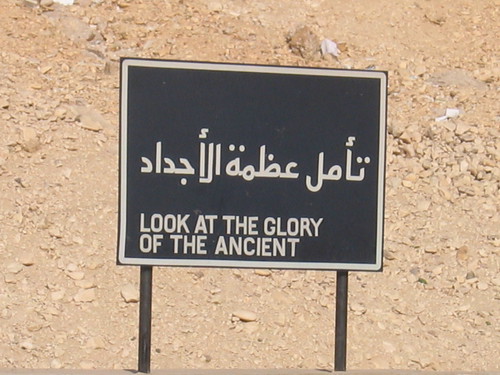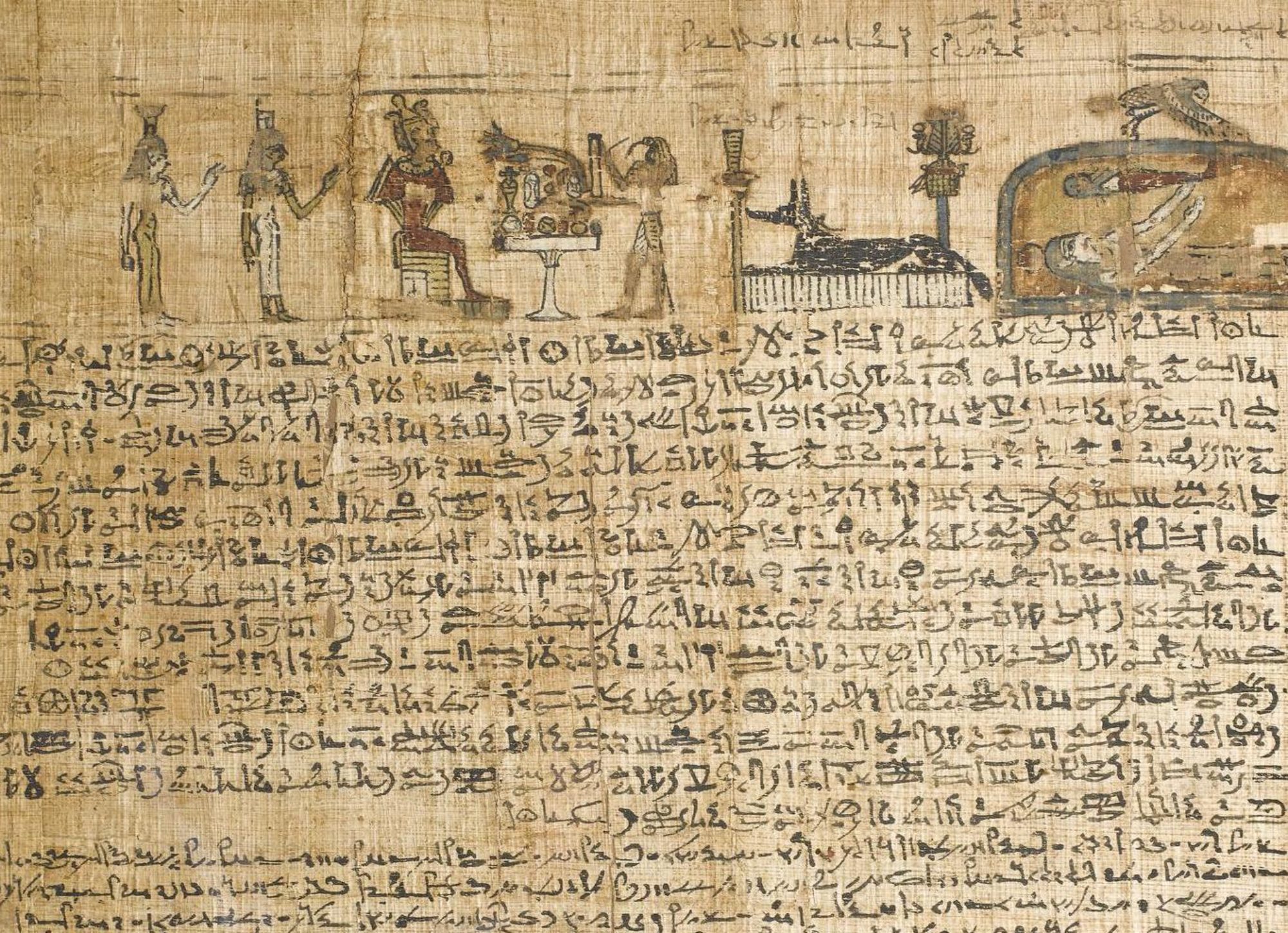You’ve probably all heard about this story already since it broke in all the newspapers awhile ago. It wasn’t an April the 1st story, though you’d be excused for thinking it. The announcement that the Egyptian government was planning to pass a copyright law on its antiquities has flabbergasted just about everyone.
Apparently the draft bill was formulated in the wake of attacks by the Egyptian media against the famous pyramid-shaped Luxor casino in Las Vegas. The newspaper Al-Wafd published an article stating that ‘Thirty-five million tourists visit Las Vegas to see the reproduction of Luxor city while only six million visit the real Egyptian city of Luxor’. (They fail to note that while the casino is called the Luxor, it has nothing to do with the city of Luxor and is actually a copy of the Great Pyramid at Giza located almost 700km away).
So, at first glance, it appears that the entire point of this law would be to get a slice of the biggest, most successful exploiters of Egyptian cultural heritage. But then comes the strange twist in the whole story: the Luxor Casino would be exempt from the law, supposedly because it’s not an ‘exact’ replica, even though it is blatantly meant to represent the Great Pyramid and the Sphinx. According to Zahi Hawass, ‘It is a resort that doesn’t look like anything from antiquity, it is a replica of imagination, I can’t stop them from doing that’. Besides, “it is an ugly pyramid with fake hieroglyphics inside’.
But why would places like the Luxor casino be exempt? If they’re not the target, then what is the point of the law and who would they be going after? If the reproductions have to be 100% accurate for the copyright to apply, how many objects will this actually affect? Such a law would just encourage businesses to make even more dreadfully ugly and inauthentic reproductions than they do already, just to avoid being accused of copying.
Also, how would the Egyptians actually manage to enforce the law internationally? I suspect that the government would only really be able to enforce the law in its own country, and thereby only succeed in hurting its own economy, tourism being its primary industry. And if they didn’t enforce it in their own country, how could they justify going after anyone outside it?
Deciding who copyright belongs to when the artists, craftsmen, and architects are unknown and so long dead seems like a minefield in itself. If artifacts are kept in museums outside of Egypt and have been there for centuries, does the copyright still belong to Egypt? The bill raises so many baffling and ludicrous questions and the whole concept seems to rest on very shaky ground.
The way I see it, reproductions are actually free advertising for the Egyptian Tourism Board. In my experience, the plastic (rather grotesque) King Tut mask that my mom got me for Hallowe’en when I was a child only further fueled my desire to one day visit Egypt myself. Around the world, similar trinkets and architectural homages only remind us of the much greater wonders that lie in Egypt itself. In the International Herald Tribune, the lawyer Jeffrey P. Weingart states: ‘Anytime someone seeks to promote and profit from artistic or photographic expression, one walks a fine line between promoting its use on the one hand and protecting material on the other’.
Whatever the Egyptian government’s confusingly unclear motives are, either trying to snatch a slice of the profits from ancient Egyptian spinoffs or impose control on use of Egyptian images, the whole concept comes across as hollow threats, all rather bizarre and futile. I certainly support finding as many ways possible to fund the Supreme Council of Antiquities’ efforts to preserve ancient Egyptian monuments, but there surely must be more effective ways than a worldwide fake pyramid hunt. In the meantime, I guess we’d all better be careful about posting our holiday snaps of the pyramids on the internet, otherwise we might find Zahi and his lawyers on our doorsteps…
For a very amusing commentary on the copyright story, check out this blog entry at the Guardian entitled ‘Quick! Hide your pyramids!’.
The Senior Copyright Counsel for Google has also written an interesting response to the issue at his blog: ‘You can walk like King Tut, but don’t copy him’.
For more articles, check out Andie Byrnes’ brilliant blog where she has been rounding up all of the media coverage on the story.


Has this law already passed yet-was it approved? If not, when is this law getting it’s approval (or hopefully disapproval) from the Egyptian government? In a week? A month?
I think it is unbelievably ridiculous. How far will Zahi go? I get the feeling he will go too far. Should we all remove our holiday pics from the net? Will the mythologies of the ancient gods and the stories and names of pharaohs and other famous ancient Egyptians be copyrighted? Will the hieroglyphic script be copyrighted? Will no one ever be able to do Egyptian art, write novels on ancient Egypt, make movies inspired by it, or even blog about it? How far does this law go?
What of all the art of ancient Egypt (ie the art from colonial times), the mummy movies, the countless novels (even the really old texts) and old photos and websites? Will they be banned? What of my collection of replicas, figurines, papyri, postcards etc from museums and from Egypt-will they have to be handed over to Hawass?
I love drawing Egyptian inspired pictures, taking pictures of the art at the British Museum, and sketching the art there, writing stories based on ancient Egypt…but now I’m too scared to do so. This law terrifies me and I know that if it passes (which it seems like it will, in Egypt anyway) it will ultimately be detrimental to Egypt, and also art, culture, science and Egyptology as a whole. Proud as they were of their own culture, I don’t think this is something even the ancients would have approved of.
Ancient Egypt belongs to the public domain, and to the whole world. It has inspired us for millennia and I really hope it can continued to do so without some ludicrous legislations getting in the way.
Now if only there was an online petition against this law that we could all sign…it probably won’t work to change the outcome, but at least it’ll get our opinions seen…
The law hasn’t passed yet, it’s just a proposal at the moment. I wouldn’t really worry too much Izzy, though I sympathize with your concerns. I’m sure you can freely continue drawing and writing about Egypt all you want, it’s only exact replicas that they seem to be targeting, not just anything Egyptian-inspired. If it doesn’t even apply to the Luxor Casino, it sounds like it won’t actually apply to all that much strangely enough! Lots of museums feature numerous replicas though, so I really hope it won’t apply to them.
Hi Margaret,
I’m of a similar opinion about the copyright issue, that it’ll ultimately backfire on Egypt. I’ve got a post here and a short article here at iCommons, site of an international organization promoting copyright liberalization.
At the start of his book ‘Rescuing the Past: The Cultural Heritage Crusade’, presumably written during the leisure time afforded by his detention at Her Majesty’s Pleasure, antiquities thief Jonathan Tokeley-Parry (Foreman) gloats that a high-profile artefact returned to the Cairo Museum in 1997 is “almost certainly a worthless fake.â€
There is no doubt that replicas are capable of fooling important people. See, for instance, see the many BBC reports(e.g.http://news.bbc.co.uk/1/hi/england/manchester/7090795.stm) on the ‘Amarna Princess’, said to have been “knocked up in three weeks in a garden shed” by a poor local family, and for which Bolton Council was induced to pay some £440,000 in 2003.
At that time, Councillor Laurie Williamson, Bolton Council’s Executive Member for Culture, said: “This was a once in a lifetime opportunity to secure an important Egyptian treasure.” (http://news.bbc.co.uk/1/hi/england/manchester/3152176.stm)
In October of the same year, Angela Robson, the Keeper of Egyptology at Bolton Museum, was interviewed on BBC ‘Woman’s Hour’. The blurb for the broadcast was:
“She’s over 3,300 years old and only 52 cm tall and she’s worth over a million pounds. Until now she’s never been seen in public. Recently Bolton Museum, with the help of a National Lottery grant, have been able to purchase a unique headless statuette of what is believed to be one of the Egyptian Queen Nefertiti’s daughters.”
See http://search.bbc.co.uk/click/p/3/ds/autonomy/t/Radio%25204%2520%252D%2520Woman%2527s%2520Hour%2520%252DNefertiti%2527s%2520Daughter/id/17231391119145120652147020749401000/-/http%253A%252F%252Fwww%252Ebbc%252Eco%252Euk%252Fradio4%252Fwomanshour%252F2003%255F41%255Fsat%255F01%252Eshtml
On 29th January 2008, Stephanie Crossley, Assistant Director for Adult Services at Bolton Council, is quoted by the BBC as actually welcoming a judicial decision not to have the object destroyed. Presumably Bolton’s embarrassment has added value to the wretched piece. (The same museum, apparently undeterred, has also hit the headlines recently in connection with the much-hyped ‘Bolton Mummy’, a classic case of what Margaret criticised in July 2007 as ‘Egyptological Theories Magically Become Fact In News Stories’)
http://www.thehistorychannel.co.uk/site/tv_guide/listings/ and http://www.dnaindia.http//www.dnaindia.com/report.asp?newsid=1156159
In their book ‘The Medici Conspiracy’ (2007, Ch. 22, page 330), Peter Watson and Cecilia Todeschini, referring to research by Dr. Christopher Chippindale of the Cambridge Museum of Archaeology and Anthropology and Dr. David Gill of the University of Swansea, have this to say:
“Another aspect of the trade that Chippindale and Gill highlight is the close link between illegally excavated and smuggled goods, on the one hand, and widespread faking, on the other. According to the thermoluminescence laboratory in Oxford, some 40 percent of antiquities sent in for testing “are found to be of modern manufacture.—
It seems to me, therefore, that the Egyptian government is right to explore legislation to prevent such artefacts from being made in the first place. Even if nine tenths of this law were unworkable, the remaining tenth would discourage the copying of antiquities, either with criminal intent or even ‘in good faith’, given the danger of their being passed on to others who might use them as part of a lucrative criminal conspiracy.
I do hope that when Dr. Hawass comes to speak at the O2 exhibition on 19th August he will not be in any way harrassed about this matter, particularly by anyone associated with the weird sisterhood from Bolton.
Thank you Gerard- you make a number of interesting points and refer to some great ‘fake’ stories. Even the British Museum was taken in by a fake statuette of Tetisheri, who has now been banished from display. One of my favourite fakes was a supposed Predynastic ceremonial slate palette in the shape of a whale (!), in the collection of the ROM, though it may have been donated rather than purchased by the museum itself.
I see your point in hoping that a copyright law would prevent the production of fakes, but unfortunately I believe that since the entire process is both illegal and highly lucrative, such a law would do little to discourage the activity. The reproductions that are generally produced and sold to the public are never quite high enough in quality or convincingly ancient to be sold as ‘fakes’. Fakes are made with the intention of fooling people and if it is a good enough fake, no one would know that the copyright law had been broken, since it would be a ‘genuine original artifact’!
I personally would never want to harass anyone, I’d just be interested in having the concept and its aims clarified since it is an incredibly complex issue.